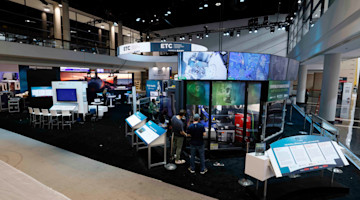The growing necessity for sustainable manufacturing has become a call to action for the industry: Take Notice and Get Involved. The Environmental Protection Agency (EPA) defines sustainable manufacturing as “the creation of manufactured products through economically-sound processes that minimize negative environmental impacts while conserving energy and natural resources. Sustainable manufacturing also enhances employee, community and product safety.” It may seem like a tall order to achieve all those goals simultaneously, but, fortunately, experts are working on ways to address these challenges.
Growing Production
Federal Reserve Economic Data indicates that industrial production has steadily increased in the United States since the 1920s (see below). Given the increase in production and productivity, it’s important to consider the means by which that production is happening. At its core, sustainability boils down to the convergence of ingenuity and stewardship.


Figure courtesy of Federal Reserve Economic Data
If sustainability as a business practice is compared to the initial cost of profit value, then the argument has a limited audience. However, if awareness supports better business practices and improvements in quality of life, then that audience begins to widen and interest deepens. At that point, it becomes a part of a company’s business model, not just an initiative.
A 2019 National Association of Manufacturers survey found that 71.9% of manufacturers had a sustainability policy in place and another 8.3% were developing one, and that movement has gained momentum. However, the meaning of sustainability and the ways to improve sustainable manufacturing can vary greatly from one organization to another. There is no common industry-wide metric.
Circular Economy
The current linear economy model — produce, consume, and discard — may not sustain humanity over the long term. The more sustainable approach is a circular economy in which resources retain maximum value and longevity within the economy. Instead of discarding products, they remain in the value stream through refinement, recycling, and reusing.


This model impacts manufacturing in a few ways. It may involve improving product quality for longer life and/or redesigning products to be more easily recovered at the end of their life. Also, it may involve reducing waste byproducts and using fewer resources during the production process.
To be good stewards of the environment, manufacturers will need to make investments in technology and time to transition to a data-driven sustainable business model. This cost may be especially challenging for smaller and medium-sized manufacturers; however, the long-term business benefits may include lower costs for waste and resources such as materials and utilities.
“We won’t have enough resources and places for waste in 50 to 100 years if we stay on the present path,” says John W. Sutherland, head of Environmental and Ecological Engineering at Purdue University. “Manufacturing engineers need to be more cognizant of the fragility of the Earth’s ecosystems. That includes more efficient and effective resource use and less waste creation.”
Sutherland has been working to reduce the impact of manufacturing on the environment for more than 30 years. His work has covered process changes such as dry machining to reduce waste and costs, product engineering via greener materials and light-weighting to consume less energy, and process planning and production scheduling that include environmental considerations.
Sutherland’s students at Purdue are working to circularize the critical materials that are vital to creating clean energy technologies such as electric vehicles and wind turbines, employing digital manufacturing to enhance sustainability in applications such as predictive maintenance, and re-envisioning supply chains with improved sustainability and resilience. Looking to the future, tremendous opportunities exist in semiconductor manufacturing, as it requires tremendous energy and water investments.
“When we work with our company collaborators, we are always looking for solutions that are win-win, that offer benefits in terms of competitiveness and the environment,” Sutherland notes.
Perhaps another driving force in the development of more sustainable manufacturing practices will be the Securities and Exchange Commission, which has proposed rule changes requiring certain climate-related disclosures, including information about climate-related risks and greenhouse gas emissions. Such disclosures may have an impact on profit, prompting executives to elevate sustainability to a high business priority.
Creating Standards
The National Institute of Standards and Technology (NIST), a part of the U.S. Department of Commerce, has on-going research projects that will ultimately result in sustainable development strategies for manufacturing that consider the environment, economy, and society (the triple bottom line).
One current NIST project is on closed-loop recovery, which focuses on end-of-life for two of the most problematic consumables going into landfills: plastics and electronics. Research results will then be applied to other materials to support the development of tools and metrics to guide recovery efforts at the end of product life. These tools will give manufacturers guidance to incorporate recovery considerations into their business processes, and give recovering companies insight into what is coming down the pike.
Another NIST project focuses on circular product design. Designing products for the circular economy requires greater insight into the choice of materials and use and end-of-use alternatives for the product. This research data will inform design engineers of material availability and variability, end-of-use options, environmental impacts of material selection choices and manufacturing production, and alternative business models, such as taking back products for refurbishment or disassembly. One example of a successful take-back model is what ink cartridge manufacturers are doing today.
The results of the NIST research are influencing standards efforts from the American Society for Testing and Materials (ASTM) International Committee E60 on Sustainability and the International Organization for Standards (IS)O) Committee 323 on Circular Economy. Together with ASTM, the NIST team lead a workshop on “Fostering a Circular Economy of Manufacturing Materials” to identify standards needs for moving towards more sustainable practices. The standards activities are open to everyone to participate have a voice in what the new world of manufacturing might look like. For more information on directions for future standards, see the new ASTM report Fostering a Circular Economy of Manufacturing Materials
“We can expect to see the adoption of smart tech like artificial intelligence and machine learning applied to improve manufacturing efficiency and material identification through advanced sensing and other methods, such as biomarkers,” says K.C. Morris, life cycle engineering group leader at NIST. “But maybe the biggest technology opportunity toward more sustainable manufacturing will be new materials that address the larger looming problem of greenhouse gases.”
For more information, visit the NIST Circular Economy website and the Purdue Environmental and Ecological Engineering website.
In part 2 of our sustainable manufacturing article series, we will address water use in manufacturing.






